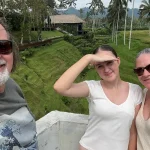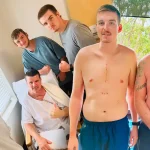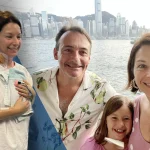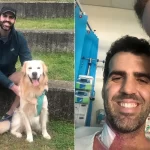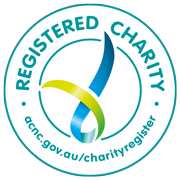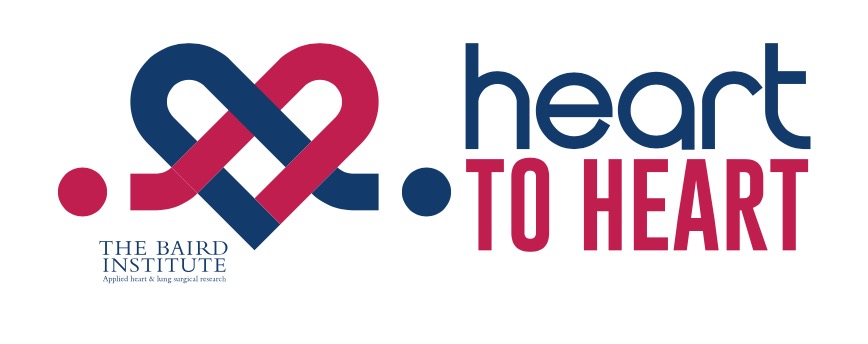Tim Macintosh’s “Curve Ball” Experience
In late 2018 at the suggestion of my GP, I had a check-up with my cardiologist. Unremarkably for my age, I had had some of the usual blood and other check-up type tests associated with men of “mature” years.
At the time I was a healthy reasonably fit 62 year old retired criminal lawyer (yes, lawyers are known to have a heart!) who had retired some 2 years earlier. I had many years earlier seen a cardiologist for arrhythmia but that was not seen to be of any concern and no treatment was required. I had no symptoms such as pain or other markers that might suggest the need for specialist care or attention. I had and have a fairly healthy lifestyle – a non-smoker, not particularly overweight and fairly fit overall. In fact a few months earlier my wife and I had done a rather rigorous 6-day mountain walk in Corsica when we were in Europe.
My cardiologist showed some degree of attention to what he identified from the echocardiogram as an irregularity near the mitral valve of my heart. The 2 dimensional image showed a wriggling or wavering line that required further attention and tests. He suggested the possibility of an elastoma or lesion. The clinical concern was that I was a potential stroke risk in the event of the inevitable dislodgement of this lesion from its anchoring and possible lodgement in the brain.
The tests included both a CT coronary angiogram and a “TOE” (trans-oesophageal echocardiogram) procedure with the latter under sedation. The TOE involves the sending of a probe containing an ultrasound type instrument into the oesophagus which views and records the heart in 3D. These tests confirmed the existence of this suspected elastoma which was actively swaying about. My wife described the image as like moving seaweed. Notwithstanding some reactive depression in me during the next 6 weeks or so, I named the lesion, ”Boris” in a more frivolous moment.
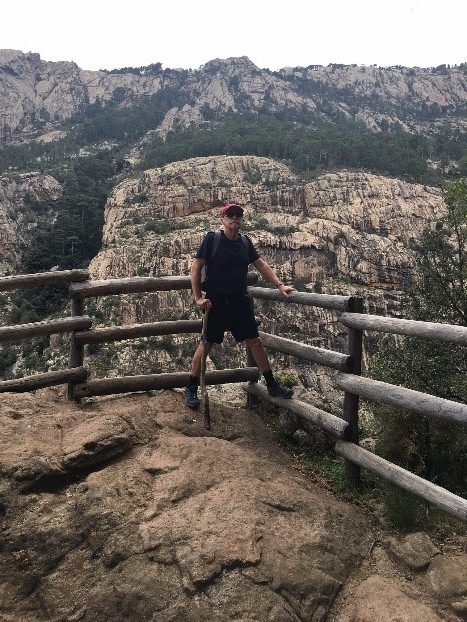
The inevitability of surgery was a reality. Welcome to Christmas 2018!
In about mid-January, this year, I was able to meet with Professor Bannon, a cardiothoracic surgeon, whose manner in dealing with me and managing my concerns was excellent. He said he could perform the surgery just a few days later on what he described in neutral terms as a “mass”. This was music to the ears of someone who was in limbo, medically and surgically, during the post-Christmas/New Year period when many professionals were having, no doubt well-earned, breaks. Music also were his words that there was a good likelihood that I would only need a partial sternotomy (the vertical line incision made along the sternum so the surgeon can access your heart).
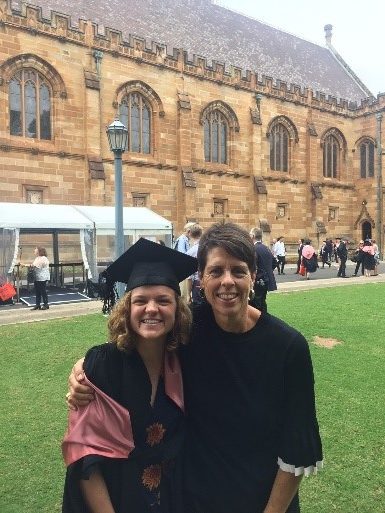
The waiting was now manageable. Boris was still with me but would soon be removed. I would not mourn Boris’ passing. The surgery on 29 January 2019 went well and the suspected elastoma was in fact a mitral valve chorda about 4 cm in length and separated from the valve itself. This problem was congenital in nature and only identified as a result of these tests late last year when I was 62 years’ old.
When the crunch comes, as it did to me – served with the curve ball (and I don’t even play baseball!), I can only observe that Australia is well served with a first world medical system along the whole medical production line, from my GP through to the fine specialists, including surgeons and nursing staff, who manage these real life events on a daily basis.
If I can take something positive from this experience it is an appreciation of the importance of research in medical science particularly (for me) in the cardiothoracic field. It is reassuring to know that the serious health needs and problems of our citizens are dealt with by highly skilled specialists who rely on the important research work undertaken for example in the area of cardiothoracic surgery by those associated with the Baird Institute. The importance of the work of the Institute cannot in my opinion be overstated. Please help their important work today with a gift to their mid-year appeal, as one day you may benefit from their important work as I have.
 The inevitability of surgery was a reality. Welcome to Christmas 2018!
In about mid-January, this year, I was able to meet with Professor Bannon, a cardiothoracic surgeon, whose manner in dealing with me and managing my concerns was excellent. He said he could perform the surgery just a few days later on what he described in neutral terms as a “mass”. This was music to the ears of someone who was in limbo, medically and surgically, during the post-Christmas/New Year period when many professionals were having, no doubt well-earned, breaks. Music also were his words that there was a good likelihood that I would only need a partial sternotomy (the vertical line incision made along the sternum so the surgeon can access your heart).
The inevitability of surgery was a reality. Welcome to Christmas 2018!
In about mid-January, this year, I was able to meet with Professor Bannon, a cardiothoracic surgeon, whose manner in dealing with me and managing my concerns was excellent. He said he could perform the surgery just a few days later on what he described in neutral terms as a “mass”. This was music to the ears of someone who was in limbo, medically and surgically, during the post-Christmas/New Year period when many professionals were having, no doubt well-earned, breaks. Music also were his words that there was a good likelihood that I would only need a partial sternotomy (the vertical line incision made along the sternum so the surgeon can access your heart).
 The waiting was now manageable. Boris was still with me but would soon be removed. I would not mourn Boris’ passing. The surgery on 29 January 2019 went well and the suspected elastoma was in fact a mitral valve chorda about 4 cm in length and separated from the valve itself. This problem was congenital in nature and only identified as a result of these tests late last year when I was 62 years’ old.
When the crunch comes, as it did to me – served with the curve ball (and I don’t even play baseball!), I can only observe that Australia is well served with a first world medical system along the whole medical production line, from my GP through to the fine specialists, including surgeons and nursing staff, who manage these real life events on a daily basis.
If I can take something positive from this experience it is an appreciation of the importance of research in medical science particularly (for me) in the cardiothoracic field. It is reassuring to know that the serious health needs and problems of our citizens are dealt with by highly skilled specialists who rely on the important research work undertaken for example in the area of cardiothoracic surgery by those associated with the Baird Institute. The importance of the work of the Institute cannot in my opinion be overstated. Please help their important work today with a gift to their mid-year appeal, as one day you may benefit from their important work as I have.
The waiting was now manageable. Boris was still with me but would soon be removed. I would not mourn Boris’ passing. The surgery on 29 January 2019 went well and the suspected elastoma was in fact a mitral valve chorda about 4 cm in length and separated from the valve itself. This problem was congenital in nature and only identified as a result of these tests late last year when I was 62 years’ old.
When the crunch comes, as it did to me – served with the curve ball (and I don’t even play baseball!), I can only observe that Australia is well served with a first world medical system along the whole medical production line, from my GP through to the fine specialists, including surgeons and nursing staff, who manage these real life events on a daily basis.
If I can take something positive from this experience it is an appreciation of the importance of research in medical science particularly (for me) in the cardiothoracic field. It is reassuring to know that the serious health needs and problems of our citizens are dealt with by highly skilled specialists who rely on the important research work undertaken for example in the area of cardiothoracic surgery by those associated with the Baird Institute. The importance of the work of the Institute cannot in my opinion be overstated. Please help their important work today with a gift to their mid-year appeal, as one day you may benefit from their important work as I have.

